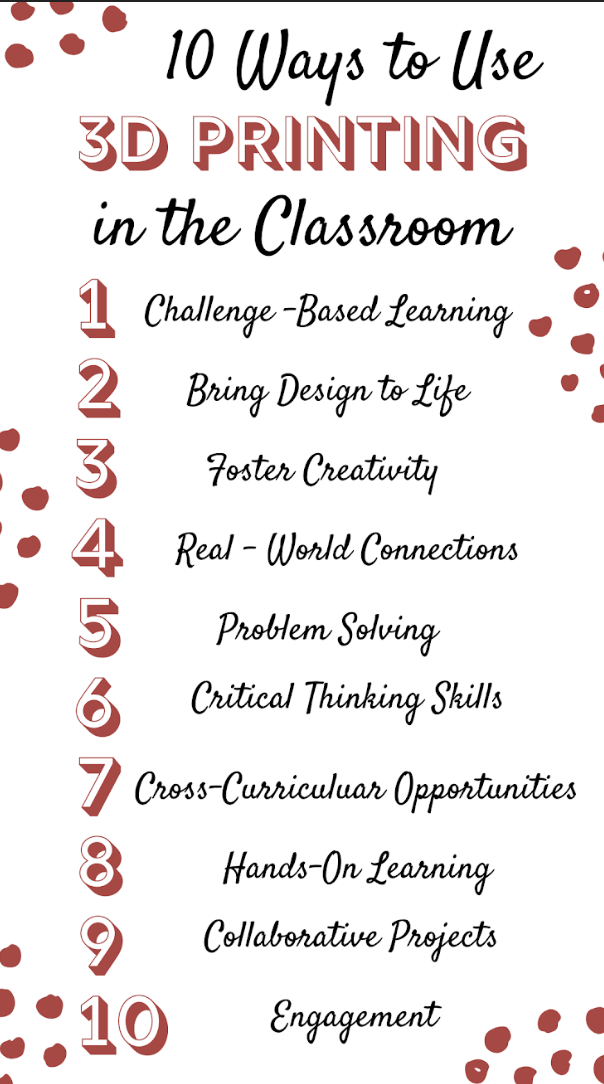Student-centered learning puts students’ interests first. In a student-centered classroom, students are given the opportunity to make decisions about, and drive, their learning experiences. Rather than listening to long lectures or reading textbooks, learners are encouraged to find, evaluate, synthesize, communicate, and create their own knowledge. These types of learning experiences support creative thinking and the expression of creative ideas instead of simply memorizing facts, solving a problem “the right way,” or restating what the teacher says.
New technologies, like 3D printers, can be used to support student-centered learning. For example, students can be given the option to show their knowledge of a lesson or unit by designing and printing a digital 3D model. Or, you could ask students to find or design a 3D model to teach their peers about a class topic. Or, 3D printers could be used as enrichment activities – students could create objects to sell and make money for a class field trip. Each of these examples puts students front-and-center of their learning. This will lead to more engagement and enthusiasm about learning in school.

Graphic designed by Kim Murphree
Quick Activity
In 90 seconds, come up with 5 ways to incorporate student-centered, design-based learning experiences with 3D printing/modeling in your classroom. Share your ideas on Twitter using the #ARVR3D hashtag.
